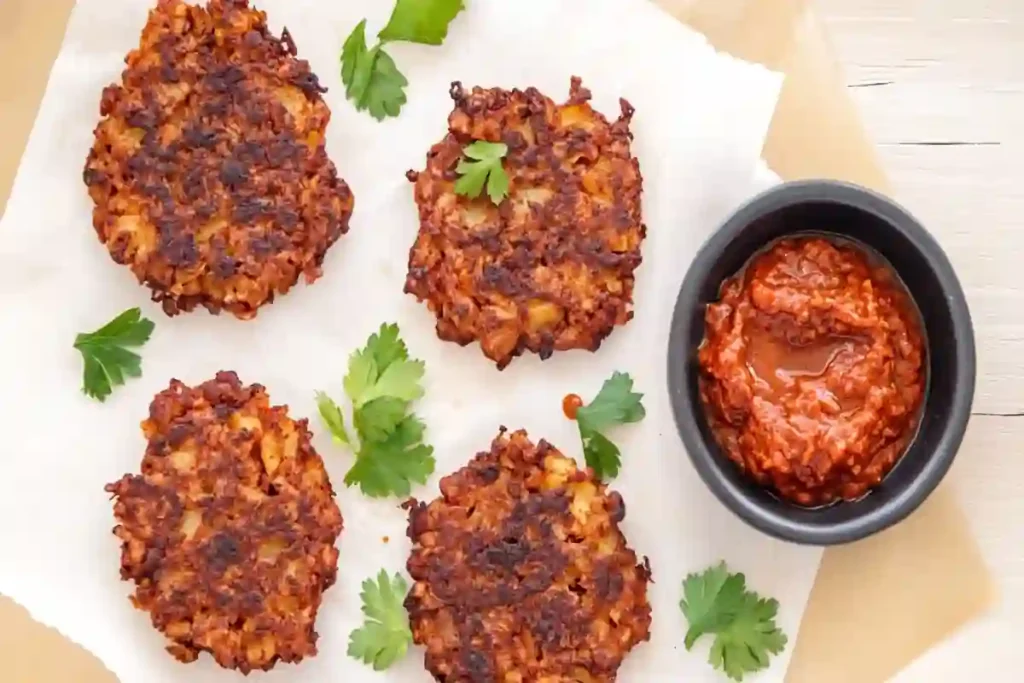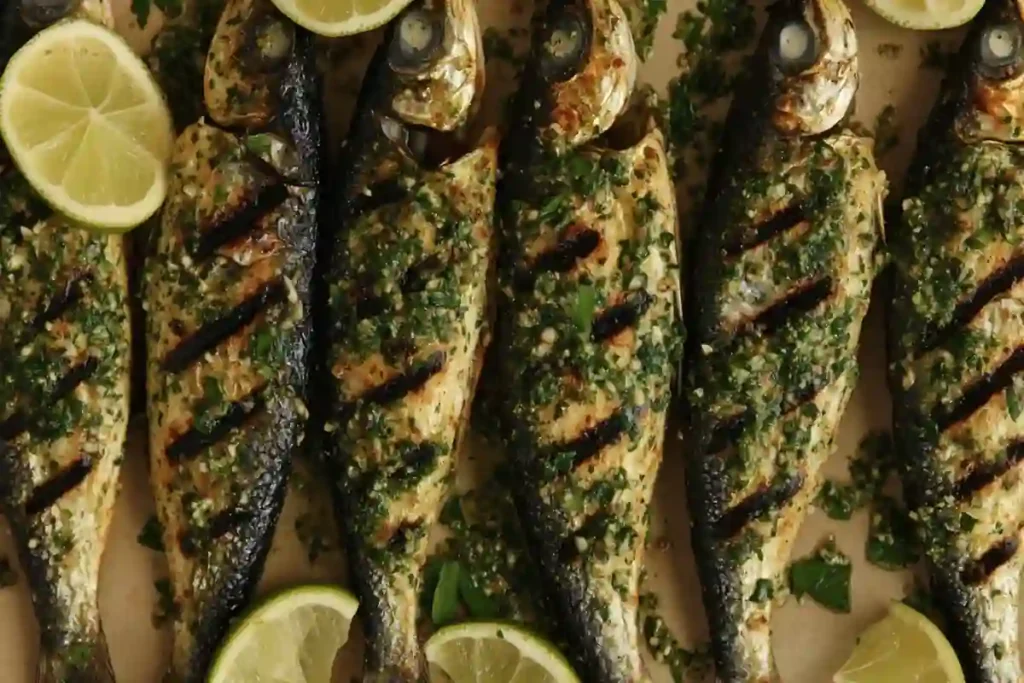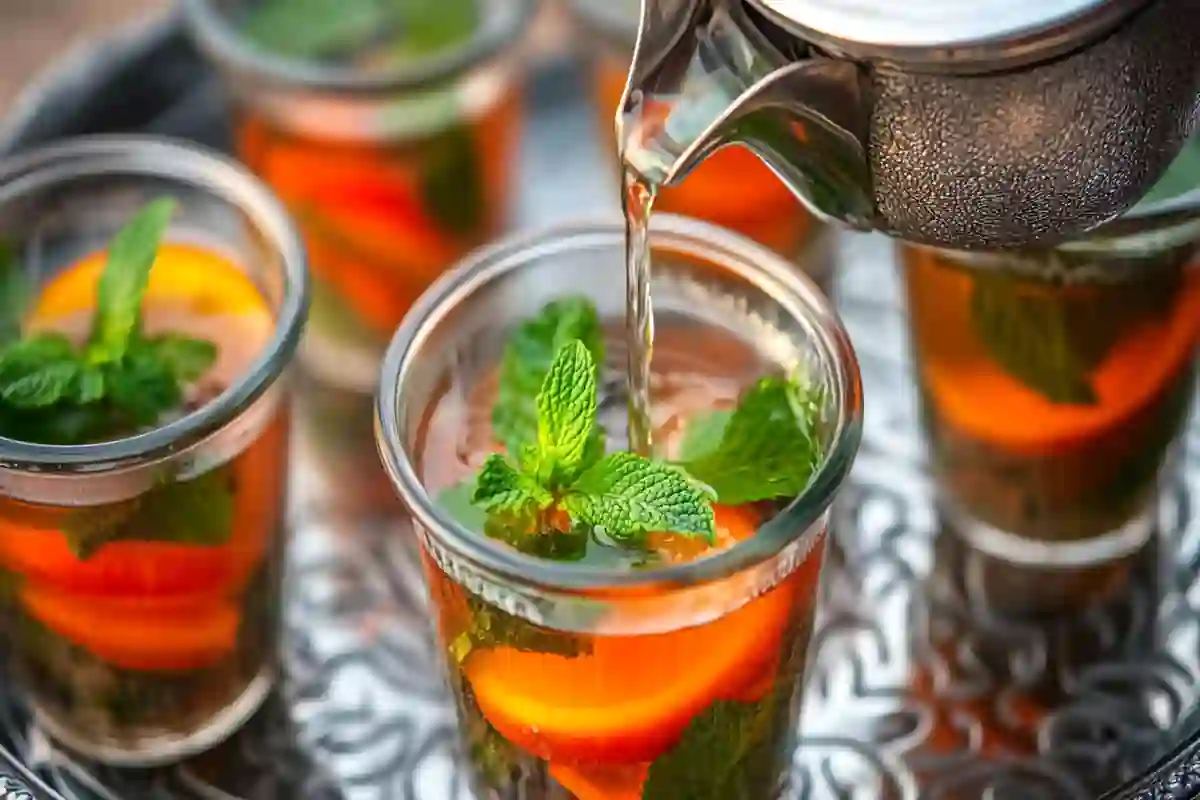Introduction
If you’ve never tried Moroccan street food, you’re seriously missing out. I mean, it’s not just food—it’s a whole vibe. Picture this: a crowded marketplace, the air thick with the smell of sizzling spices, warm bread, and grilled meats. You hear vendors calling out, tea glasses clinking, and someone nearby is definitely frying something delicious. That’s Morocco. That’s what we’re bringing into your kitchen today.
I grew up in a neighborhood where the local food truck scene tried to be “global,” but it wasn’t until a trip to Marrakech that I really understood what real street flavor tastes like. Moroccan street food isn’t just about feeding your stomach—it’s about feeding your soul. It’s warm, bold, unexpected, and honestly? Super easy to make at home if you’ve got the right guide (hey, that’s me).
So, whether you’re planning a cozy Friday dinner or wanna show off at your next potluck, these Moroccan street food recipes are about to blow your guests away—no passport required.
Let’s break it down, street-style.
What Makes Moroccan Street Food So Special?
Moroccan street food isn’t just popular because it’s tasty—it’s built on layers of tradition, community, and serious flavor. At the heart of every bite, you’ll find bold spices like cumin, paprika, coriander, and cinnamon, mixed with fresh herbs, garlic, and preserved lemon. These dishes are all about comfort and convenience. They’re made to be eaten fast, on the go, but they still pack the kind of flavor that makes you stop mid-bite and go, “Whoa.”
And the textures? Oh man. Think crispy, fluffy, chewy, crunchy—all in one bite. It’s not fancy food. It’s food made by hand, served with pride, and shared with friends or total strangers. That’s what makes it so special.
You’ll find everything from fried doughnuts to grilled sardines, and most of it is made fresh right in front of you. There’s no secret sauce here—just good, honest food that’s stood the test of time.
Must-Try Moroccan Street Food Recipes
Alright, let’s get into the good stuff. These are the real MVPs of Moroccan street food. I’m talking about the kind of dishes you’d find being sold off little carts in the medina or at late-night food stalls where locals gather after dark. And don’t worry—I’ve got step-by-step instructions coming up for each one, plus a few personal tips that’ll save you time.
Sfenj – Moroccan-Style Doughnuts
Sfenj is what happens when a doughnut meets a cloud. No joke. These golden, airy rings are deep-fried and either sprinkled with sugar or soaked in honey. You’ll find them in every corner of Morocco, especially in the mornings. People grab ’em hot, usually with a glass of mint tea in hand.
Pro tip: The dough is sticky and a little fussy. I like to oil my hands before shaping the rings—it makes life way easier. And if you don’t have a deep fryer, no sweat—just use a heavy-bottomed pot and keep the oil at medium heat.
Harcha – Semolina Flatbread
Now, harcha isn’t flashy—but it’s cozy and comforting. Think of it like a cross between cornbread and an English muffin. It’s made with fine semolina, butter, and milk, then cooked on a griddle until golden on the outside and soft on the inside.
You can eat it with pretty much anything. My personal favorite? Slathered with goat cheese and a little honey. That combo? Absolute magic.
Quick tip: Harcha freezes like a champ. Make a double batch, wrap them up, and pop them in the freezer. Then just reheat on the skillet when you’re ready.
Maakouda – Fried Potato Cakes

Alright, if you love anything fried and crispy (who doesn’t?), maakouda is about to be your new favorite thing. These little golden patties are made with mashed potatoes, garlic, parsley, and spices like cumin and turmeric. They’re then pan-fried until the edges get all crispy and golden.
Now here’s the cool part: in Morocco, you’ll often see folks stuffing them into baguettes with spicy harissa and fresh veggies—basically a fried potato sandwich. Yes, it’s just as awesome as it sounds.
Kitchen note: If you’re making a bunch, let the patties chill in the fridge before frying. They hold their shape way better that way.
Msemen – Layered Moroccan Pancakes
Oh man, msemen is one of those things that looks way harder to make than it actually is. It’s a flat, square-shaped pancake that’s flaky on the outside and chewy inside. The magic is in the folding—kind of like puff pastry but made in a skillet.
You’ll find them plain or stuffed with things like onions, ground beef, or even spicy cheese. I’ve had them hot off the griddle with a drizzle of honey, and honestly? It felt like I’d just leveled up my breakfast game.
Pro tip: Use a little oil and semolina between layers when folding. That’s the secret to getting that signature flake and crispiness.
Brochettes – Moroccan Grilled Meat Skewers

If you’ve ever smelled meat sizzling over charcoal at a street stand, chances are it was brochettes. These skewers—usually lamb or beef—are marinated in a mix of cumin, paprika, garlic, and olive oil, then grilled until juicy and just a little charred. They’re super simple, but man, they hit hard.
Brochettes are often served with khobz (that thick Moroccan bread) and harissa for dipping. They’re finger food at its best—grab, pull, and enjoy.
Grilling tip: Let your skewers rest for a couple of minutes after grilling. It locks in the juices and keeps the meat tender.
Bissara – Warm Fava Bean Soup
This one’s a hidden gem. Bissara is a thick, creamy soup made from dried fava beans and seasoned with garlic, olive oil, and spices like cumin and chili. It’s super budget-friendly, and people in Morocco love it as a breakfast dish—especially in winter.
You’ll usually find it in big pots, ladled into bowls, with extra cumin and olive oil drizzled on top. Grab a chunk of crusty bread for dipping and you’re good to go.
Quick tip: If you’re using dried beans, soak them overnight. But hey, canned fava beans totally work if you’re short on time.
Grilled Sardines with Chermoula

Okay, hear me out—even if you’re not a huge fish person, grilled sardines in Morocco are next-level. They’re marinated in chermoula, which is this garlicky herb paste made with cilantro, parsley, paprika, lemon juice, and olive oil. Then they get grilled until smoky and crisp on the edges.
They’re especially popular in coastal cities like Essaouira, where the fish is crazy fresh. You can eat them as-is or throw them in a sandwich with tomatoes and onions.
Pro move: Use parchment paper if you’re baking these instead of grilling. Makes cleanup so much easier.
Chebakia – Sesame Honey Cookies
Now this one right here? It’s a showstopper. Chebakia is a classic Moroccan treat, especially popular during Ramadan, but honestly, it’s so good you’ll want it year-round. These cookies are twisted into flower shapes, deep-fried, and then soaked in a honey-orange blossom syrup and sprinkled with sesame seeds.
They’re crunchy, sticky, floral, and totally addictive. You eat one, and suddenly five more are gone. Don’t ask how—I speak from experience.
Heads-up: The dough does take a bit of work to shape, but you can totally do it in batches or freeze the shaped cookies before frying. Also, the syrup makes your kitchen smell like a dream.
Khlea – Preserved Moroccan Beef
This one isn’t as common in the U.S., but in Morocco? It’s gold. Khlea is beef that’s been marinated, dried, and slow-cooked in fat to preserve it. Sounds intense, right? But when you reheat it and toss it into eggs or sandwiches, it’s out of this world.
It’s rich, smoky, and kind of feels like Moroccan beef jerky got a gourmet upgrade. You’ll see it mostly in breakfast dishes, but it makes a killer filling for msemen or harcha, too.
Pro tip: You can cheat this a little at home with a slow cooker and some good quality beef. It won’t be 100% traditional, but the flavor is still incredible.
Moroccan Mint Tea

And finally—we gotta talk about the tea. Moroccan mint tea isn’t just a drink. It’s tradition. It’s hospitality. It’s the one thing you’ll find on every street corner, usually poured from high above the glass to get that nice little foam on top.
It’s made with green tea (usually gunpowder green), tons of fresh mint, and sugar. And when I say sugar, I mean sweet. Like dessert-level sweet. But the mint balances it out beautifully.
Tea hack: Steep the tea leaves first, then toss out the first brew to get rid of bitterness. Then add fresh water, mint, and sugar. Pour it high and proud into a glass, and don’t be shy with the presentation—it’s part of the fun.
Tips to Cook Moroccan Street Food at Home
Let’s be real—street food hits different when it’s made fresh, fast, and with love. But if you’re cooking this stuff in your own kitchen, you gotta make a few adjustments. Here’s how to do it without losing the vibe.
Where to Find Moroccan Spices in the U.S.
Spices are the heart of every Moroccan dish. You’ll want to keep staples like cumin, paprika, cinnamon, turmeric, and ginger on hand—plus preserved lemon if you can get it (trust me, it’s a game-changer).
Where to look:
- Middle Eastern or international markets – These are goldmines. You’ll find spices in bulk, and they’re usually cheaper and fresher.
- Online spice shops – Check out places like Burlap & Barrel, The Spice House, or even Amazon for Moroccan blends like ras el hanout.
- DIY spice blend tip: If you can’t find ras el hanout, mix cumin, paprika, coriander, ginger, cinnamon, and black pepper. Boom—you’ve got a solid base.
Must-Have Tools and Pantry Staples
Moroccan food is simple, but having a few key tools makes everything smoother.
Tools to snag if you can:
- A flat griddle or cast iron pan (for msemen and harcha)
- Skewers (metal or wooden) for brochettes
- A deep, heavy-bottomed pot (great for bissara and frying sfenj)
- A good tea pot or small saucepan for that classic mint tea pour
Pantry staples to stock up on:
- Semolina flour (fine for harcha, coarse for texture)
- Chickpeas, fava beans, lentils
- Olive oil (a must!)
- Fresh garlic, cilantro, and parsley
- Harissa (you can buy or make it, but always keep some around)
Time-Saving Tricks for Busy Cooks
Let’s be honest—some of these recipes can feel like a lot if you’re coming home after work or juggling a million things. But there are ways to cut corners without killing the flavor.
Here’s what I do:
- Pre-make doughs – Msemen and harcha dough can be made ahead and chilled or frozen.
- Batch your spice blends – Mix a big batch of Moroccan seasoning and keep it in a jar.
- Use canned beans – If you’re making bissara, canned fava beans work great in a pinch.
- Pre-grill or bake brochettes – You can marinate the meat the night before and cook when ready.
Creating a Moroccan Street Food Night at Home
Alright, picture this: your kitchen smells like grilled meat, warm spices, and fresh mint tea. You’ve got music playing (try some gnawa or Moroccan chaabi for the full effect), friends gathered around, and a spread that looks like it came straight from Jemaa el-Fnaa. Let’s make that happen.
Simple Menu Ideas for a Full Moroccan Night
You don’t need to cook every recipe we’ve covered (unless you’re really going for it). Here’s a sample lineup that’ll keep things fun, flavorful, and totally doable.
Starter / Snack Table:
- Sfenj (Moroccan doughnuts) served with powdered sugar and honey
- Mint tea in glass cups (bonus points for a dramatic pour)
Main Table:
- Brochettes (grilled lamb or beef skewers)
- Maakouda (fried potato patties—sandwich-style or bite-size)
- Msemen or harcha (great for scooping, filling, or just munching)
Side Option:
- Bissara (served in small bowls with olive oil + cumin)
- Flatbread or baguette (for sandwiches and dipping)
Dessert:
- Chebakia or store-bought dates and nuts
Vibes: Setting the Mood Like a Moroccan Market
Okay, now that the food’s set, let’s talk atmosphere.
Lighting:
Go low and cozy. Think string lights, tea lights, or lantern-style lighting if you’ve got it. No need for anything fancy—just warm and inviting.
Music:
Spotify or YouTube have plenty of Moroccan or North African playlists. Try a “Moroccan Café” mix for something chill and street-market-inspired.
Plating:
Serve everything family-style. Use trays or big wooden boards for meats, small bowls for dips and olives, and wrap warm breads in clean cloth towels to keep them soft.
Fun Add-On:
Have guests eat with their hands for the full experience—Moroccan meals are often communal and finger-friendly. Just keep napkins handy.
Make-Ahead Game Plan
If you’re hosting, here’s how to prep without stressing:
- Night Before:
- Marinate your meats
- Make doughs (msemen, harcha, or sfenj)
- Chop veggies and herbs for garnish
- Pre-blend your spice mix
- Day Of:
- Fry maakouda or sfenj
- Grill brochettes
- Brew mint tea and keep warm in a thermos
- Warm flatbreads just before serving
Frequently Asked Questions
What are Moroccan street food staples I should try first?
Start with Maakouda, Sfenj, and Msemen. They’re beginner-friendly, super flavorful, and give you a real taste of the street food scene. If you’re into grilling, brochettes are a must.
Can I make Moroccan street food vegetarian or vegan?
Absolutely. A lot of dishes are naturally meat-free. Try Bissara, Maakouda, Harcha, and Chebakia. For meat-based recipes, you can easily sub in chickpeas, tofu, or mushrooms with the same seasonings.
How spicy is Moroccan food typically?
Not burn-your-face-off spicy—more warm and fragrant. Think cumin, paprika, cinnamon—not jalapeño heat. You can add spice with harissa or chili, but most dishes are more about depth than fire.
Can I freeze or reheat these dishes?
Yep! Most of them hold up well:
- Msemen and harcha freeze beautifully.
- Maakouda can be reheated in a pan.
- Brochettes are best fresh but still good the next day.
How long do these recipes take to make?
Some are super quick—Maakouda takes about 30 minutes. Others, like Sfenj, need a little rise time. But you can prep a lot ahead, and once you’ve done it once or twice, it gets way easier.
Is Moroccan street food healthy?
Honestly? It can be! Sure, some dishes are fried, but you’ve also got beans, herbs, olive oil, and tons of spices with health benefits. And since you’re cooking at home, you control everything.
Conclusion: Why Moroccan Street Food Is Totally Worth Making
So here’s the thing—Moroccan street food isn’t just about recipes. It’s about a whole feeling. It’s spicy, cozy, fresh, and straight-up exciting. Whether you’re frying up sfenj on a lazy Sunday or grilling brochettes for friends on the weekend, these dishes deliver way more than just flavor. They bring culture, stories, and a little bit of magic into your kitchen.
Even if your first msemen turns out more like a pancake blob (been there!), the experience is worth every second. You’re not just cooking—you’re connecting with something real, something rooted, and something seriously tasty.
So go ahead—try it out. Mess it up. Nail it. Share it. You don’t need a plane ticket to get a taste of Morocco. You just need a skillet, some bold spices, and a little time to let your kitchen smell like heaven.

